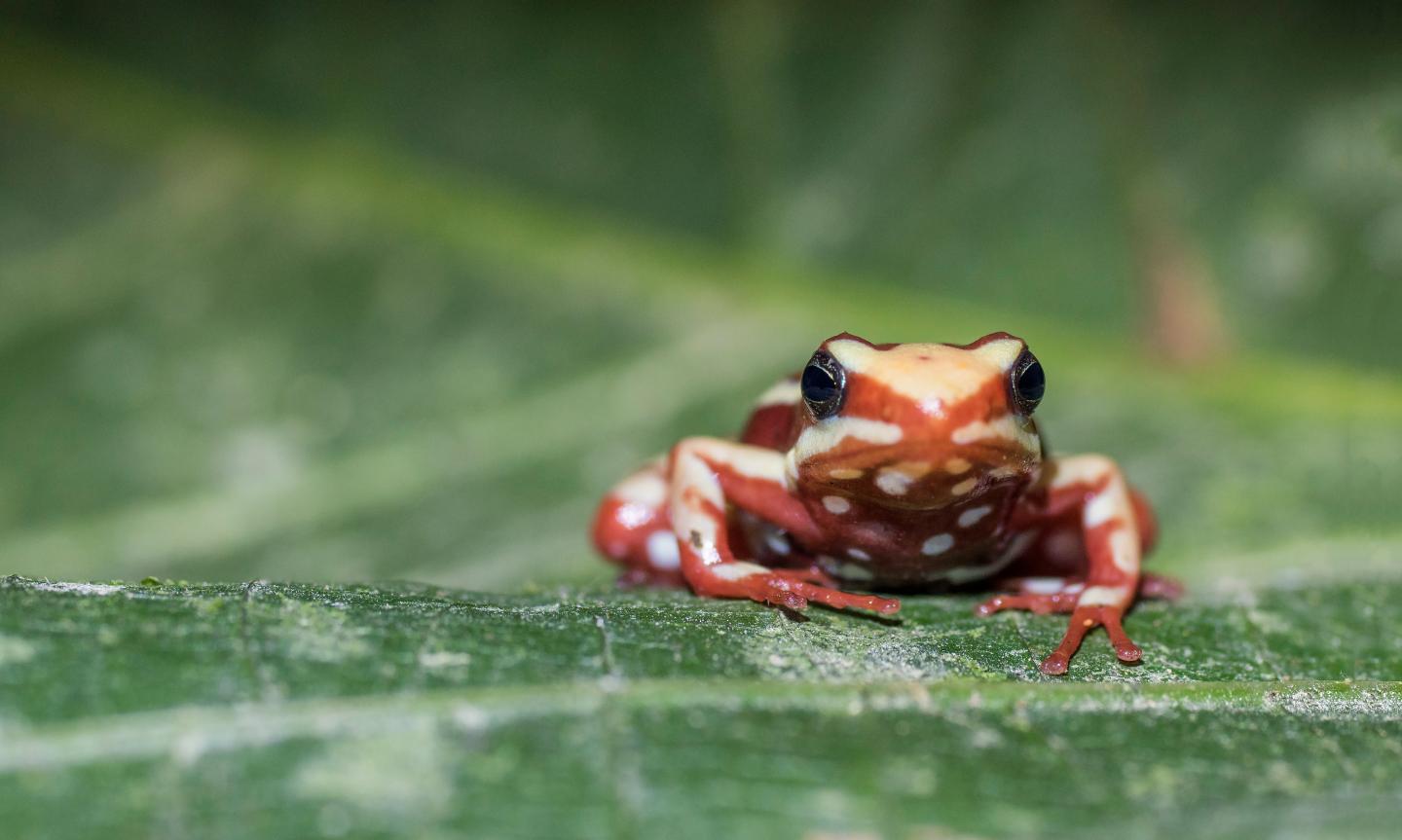현재 위치:홈 > 뉴스현황 > Press Events > Poison Frogs Evolved...
저자: 업로드:2017-09-26 조회수:
Brightly colored but capable of dark deeds, poison frogs accumulate or generate toxic chemicals that are harmful to predators, but tolerable to the frogs themselves. For example, many poison frogs have evolved resistance to their own neurotoxins by swapping out a few amino acids in their neurotransmitter receptors. Some amino acid replacements have altered toxin-binding sites, thereby imparting target-site insensitivity. Such replacements have led to tetrodotoxin resistance in poison frogs and other poison animals.
Even more impressive, a new report indicates, some poison frogs managed to retune a neurotransmitter receptor so that it not only became insensitive to a particular toxin, called epibatidine, but also remained sensitive (or regained sensitivity) to an essential neurotransmitter, acetylcholine. The new research, led by scientists at The University of Texas at Austin, suggests how a subgroup of poison frogs came to rely on epibatidine, which binds to receptors in their predators’ nervous systems, causing hypertension, seizures, and even death.
The researchers discovered that a small genetic mutation in the frogs, a change in just three of the 2,500 amino acids that make up the receptor, prevents the toxin from acting on the frogs' own receptors, making them resistant to its lethal effects. Not only that, but precisely the same change appeared independently three times in the evolution of these frogs.
Interestingly, the receptor's functionality was maintained by additional amino acid replacements that differed among poison frog lineages, allowing them to resist their self-generated toxins, while still maintaining normal operation of their target neurotransmitters.

Details appeared in the journal Science, in an article entitled, “Interacting amino acid replacements allow poison frogs to evolve epibatidine resistance.” By exploring the molecular-level changes that culminated in epibatidine resistance, the article suggests how evolution can solve complex problems in systems biology that may otherwise seem impossible.
“We suggest two possible evolutionary pathways for acquisition of toxin resistance,” wrote the authors of the Science article. “In the first, initial replacements may provide a small selective benefit of resistance yet carry some physiological cost in receptor function. We speculate that yet unidentified mutants in the poison frog nAChR [nicotinic acetylcholine receptor] sustained receptor functionality—i.e., by inducing nAChR expression changes—until other replacements such as F106L evolved to rescue receptor sensitivity to ACh. In the second possible trajectory, certain mutants already present in the gene pool provide a genetic background in which resistance arises without cost.”